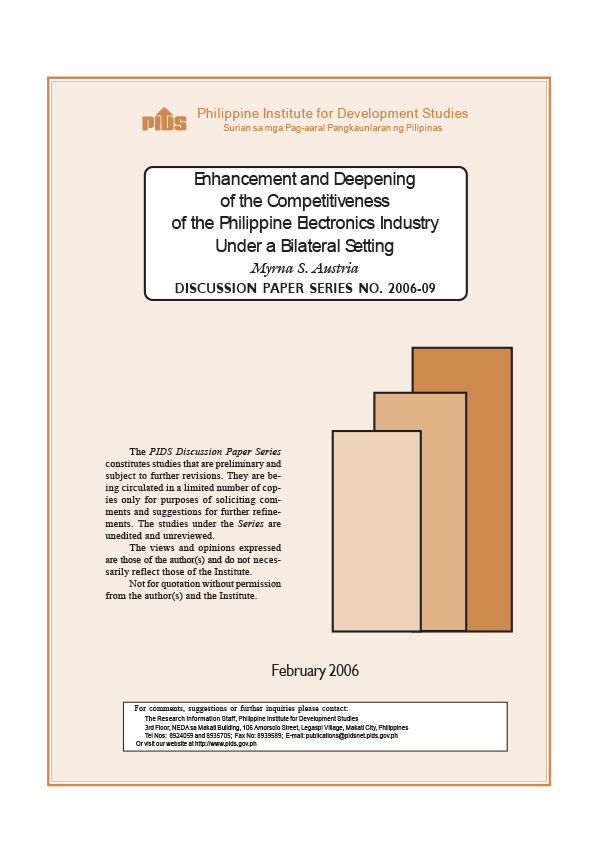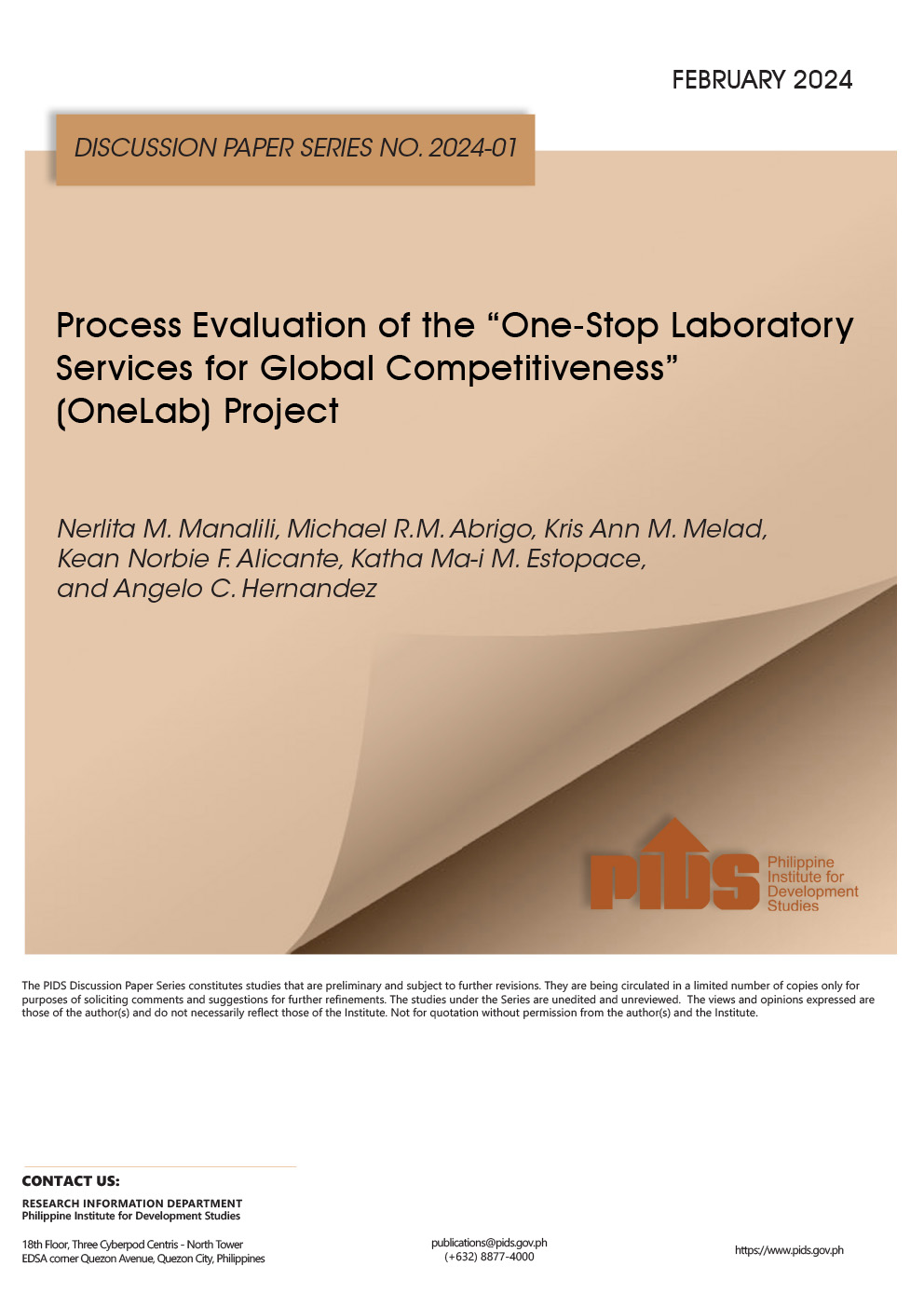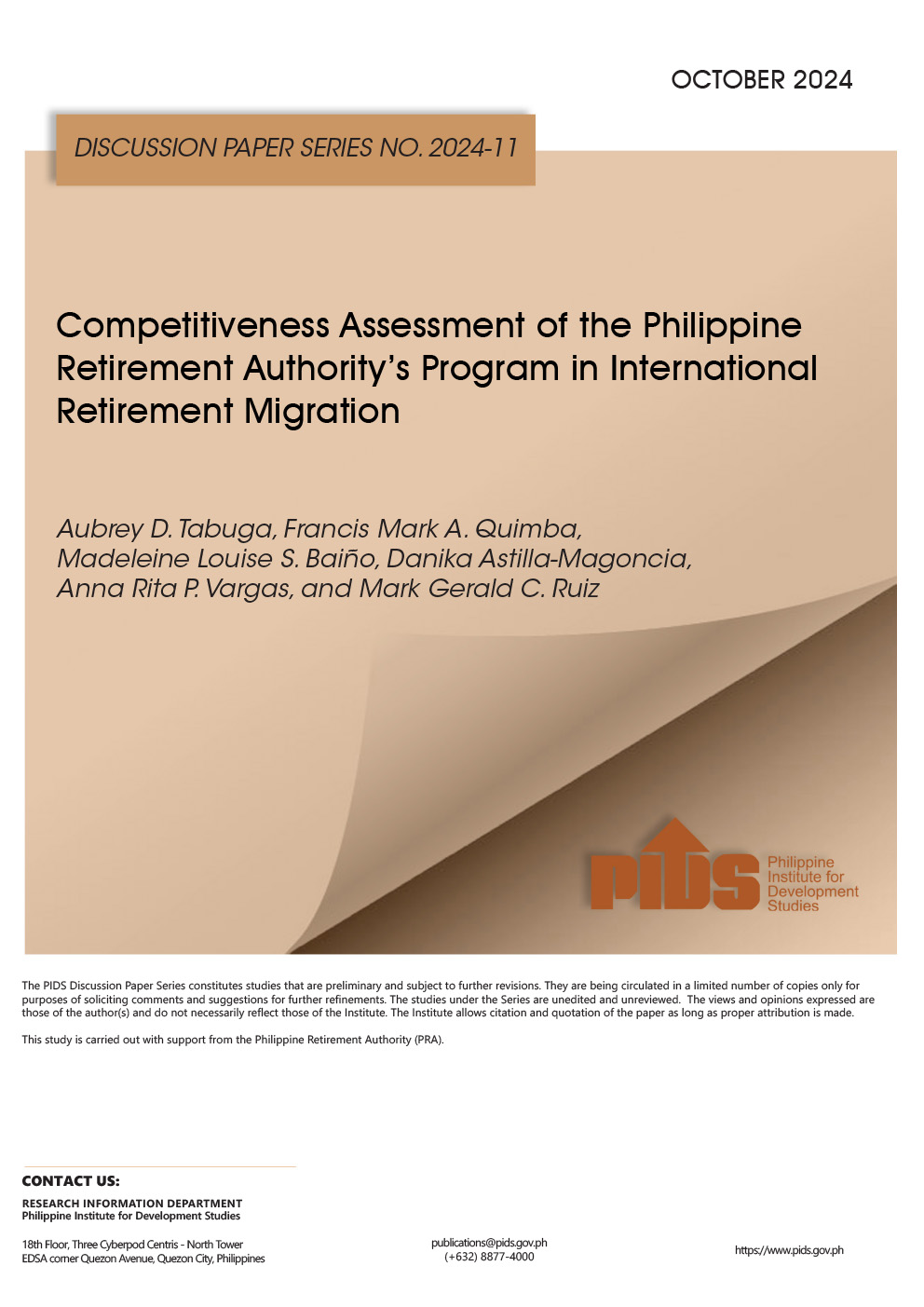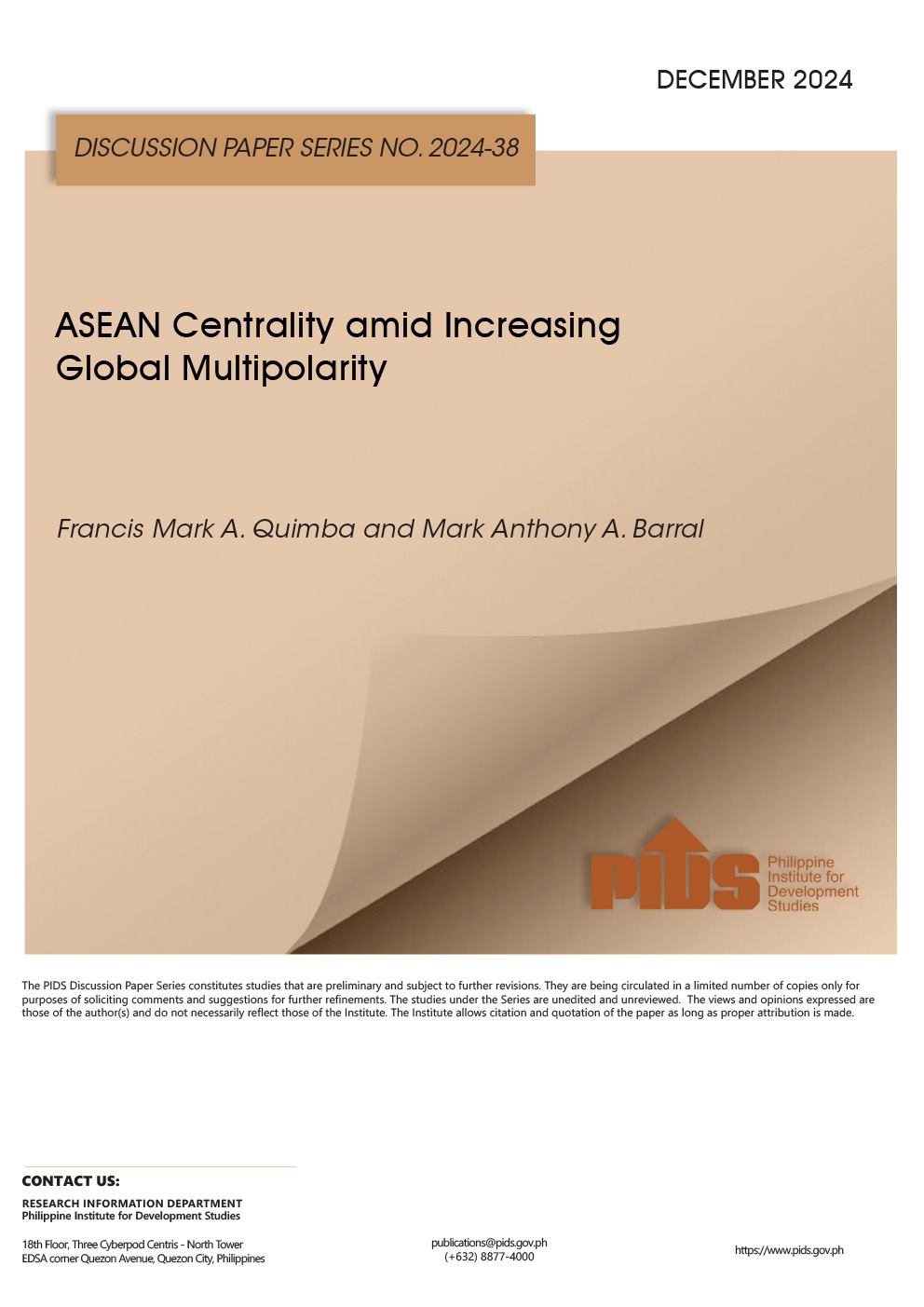The participation of the Philippines in the global production network of multinational electronic companies has undoubtedly shaped the pattern and structure of the country’s international trade since the early 1990s. While the industry has remained the largest foreign exchange earner for the country, the country’s participation in the global production network industry is confronted, for the longest time, with one major issue. That is, the country hardly progressed beyond the lowest level of the production chain--labor intensive and import dependent assembly and testing; and hence, the value added of the industry has remained small. The industry is competitive in 18 electronic products that accounted for about 86 percent of the industry’s total exports. The government, however, needs to address the weaknesses and inadequacies of the local support structures that have constrained the ability of the country to move towards higher levels of the value chain in order to ensure that the global players currently operating in the country will remain and expand operations. Since the global production network is market-driven, negotiations under an RP-US Free Trade Area should be focused on trade and investment liberalization and facilitation in order to improve the functioning of the markets of both economies.
Citations
This publication has been cited 2 times
- Aldaba, Rafaelita M. and Fernando T. Aldaba. 2013. Do FDI inflows have positive spillover effects? The case of the Philippine manufacturing industry. Philippine Journal of Development PJD 2010, 37, no. 2b. Philippine Institute for Development Studies.
- Wignaraja, Ganeshan, Dorothea Lazaro, and Genevieve De Guzman. 2010. FTAs and Philippine business: Evidence from transport, food, and electronics firms. Trade Working Papers 22880. East Asian Bureau of Economic Research.













